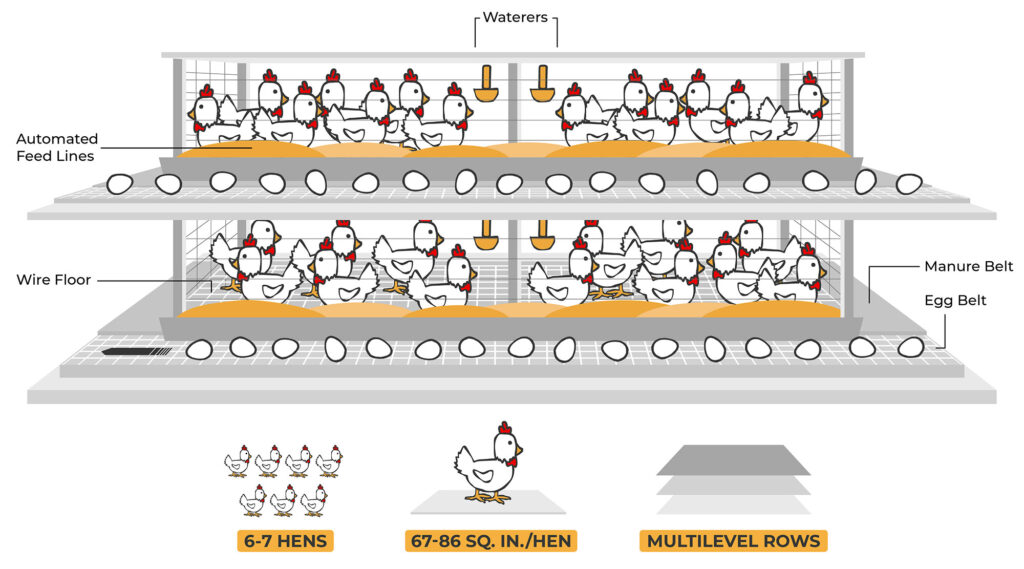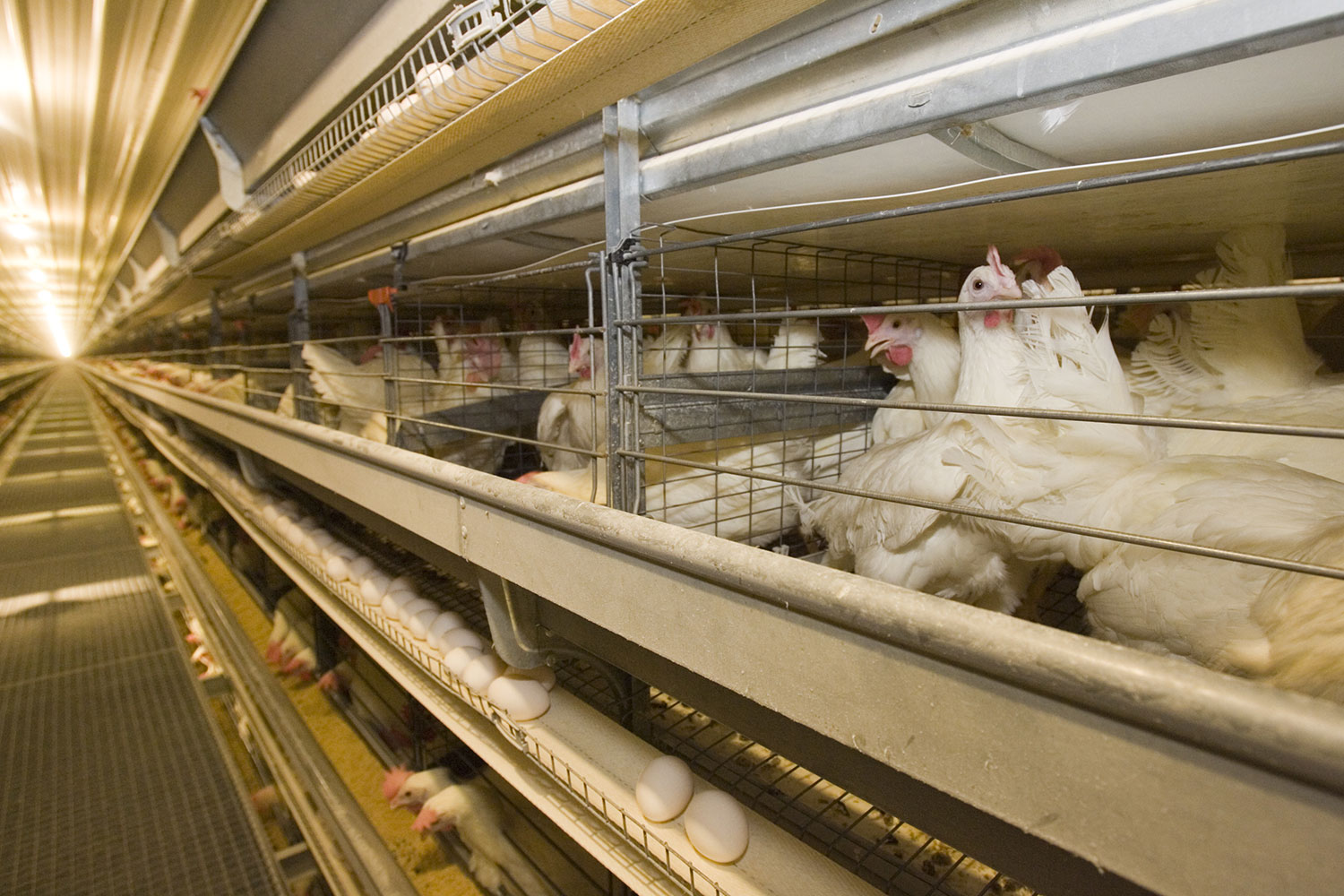Conventional eggs are the standard eggs you find on the grocery shelf that are simply labeled “eggs”—usually with a grade AA, A or B and a size like large or jumbo. These eggs come from hens that are raised in cages. Keeping hens in cages in temperature-controlled barns protects them from extreme heat and cold and stormy weather, as well as from typical predators, like foxes, weasels, and hawks. Cages improve hen-house sanitation, make it easier to monitor each hen’s health, and prevent the hens pecking each other,23,24 which is a natural social behavior that can lead to injury. The caged systems also make egg collection much more efficient. For these reasons, the lowest-priced eggs typically come from farms that use this method. Cages don’t allow hens to really spread their wings or move around a lot and hens in this kind of housing system don’t have access to the outdoors.

- Learn more about standard or conventional eggs
-
Approximately 60% of the commercial egg farming in the U.S. relies on caged housing environments.25 The huge increase in egg productivity that caged housing made possible is what allowed America’s egg farmers to feed a booming population that grew from 138 million people in 1944 to 328 million in 2019. During that same 75 years, farmers increased egg production by more than 85%—from nearly 52 billion eggs in 1944 to more than 96 billion eggs in 2019.26 Specific standards for caged hen housing are set by third-party certification programs and by state laws. More than 90% of U.S. egg production falls under a United Egg Producers (UEP) certification program. UEP certification for conventional housing specifies 6-7 hens per cage and 67-86 sq inches per hen.27

